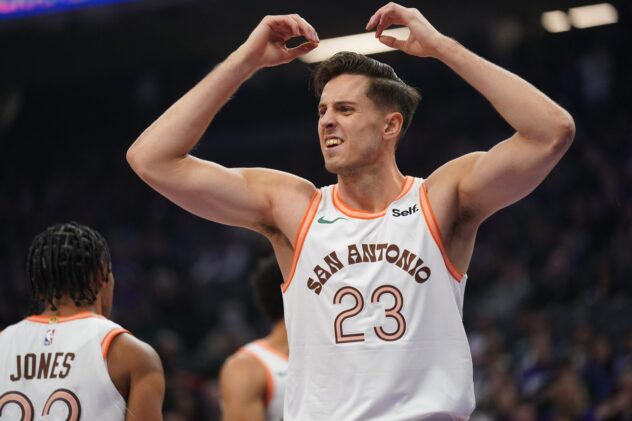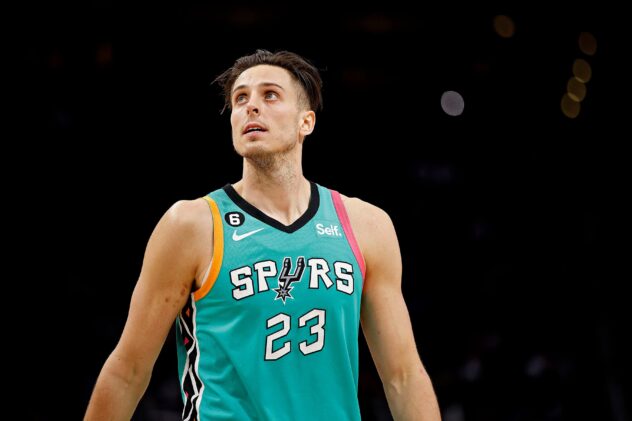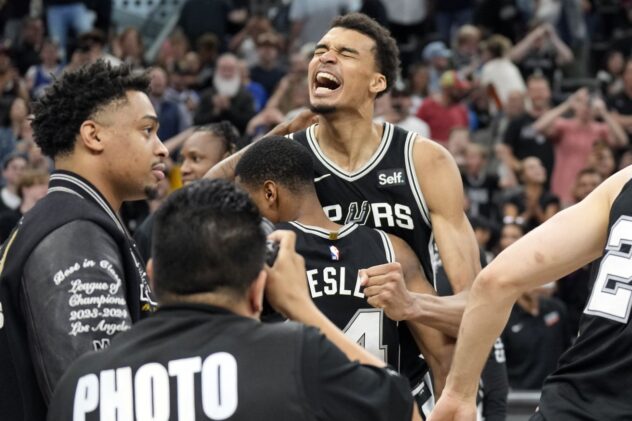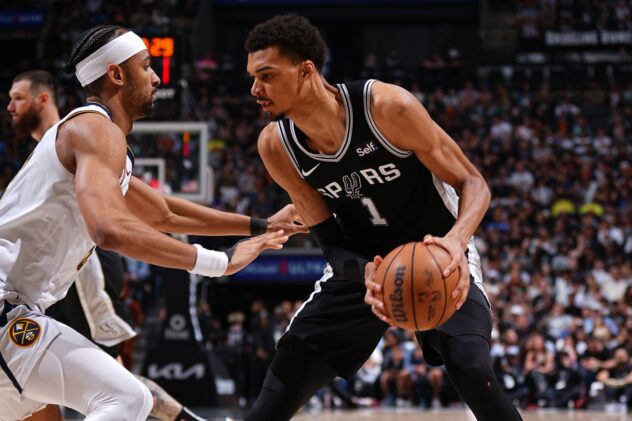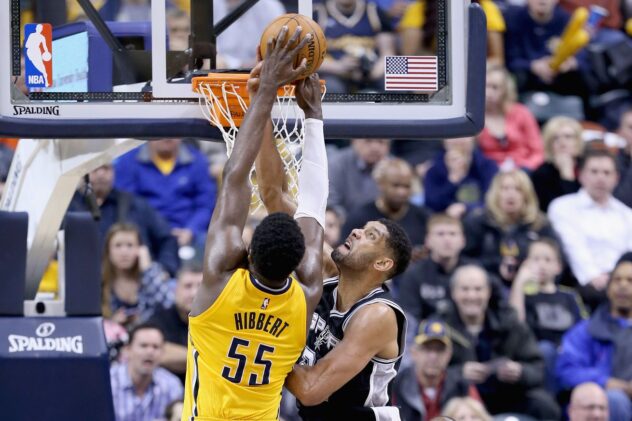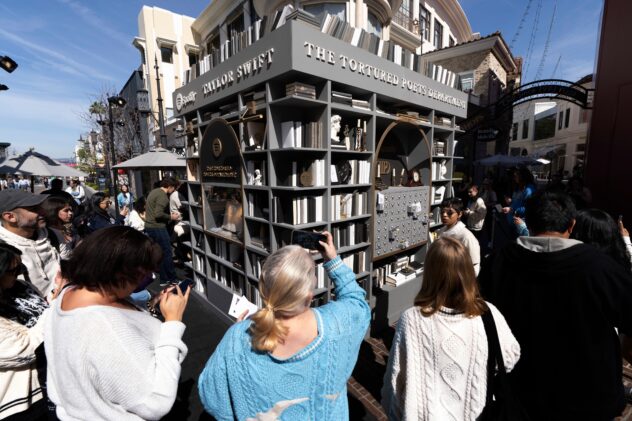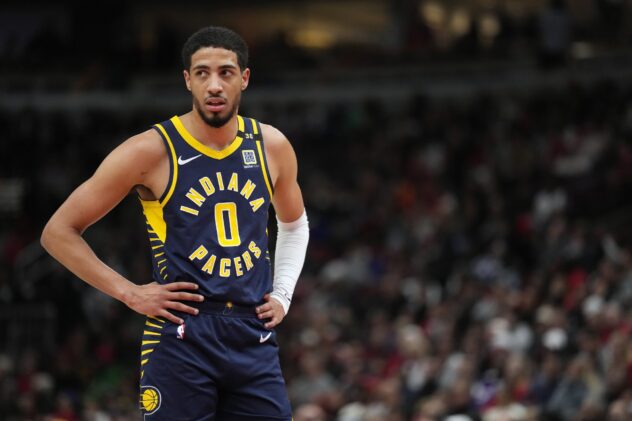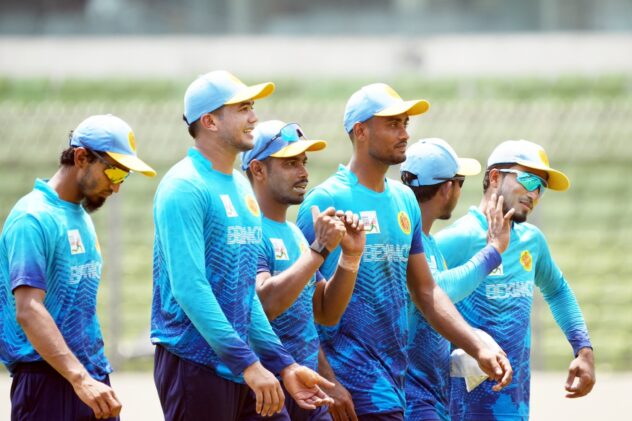How the Spurs are handling double teams in the post
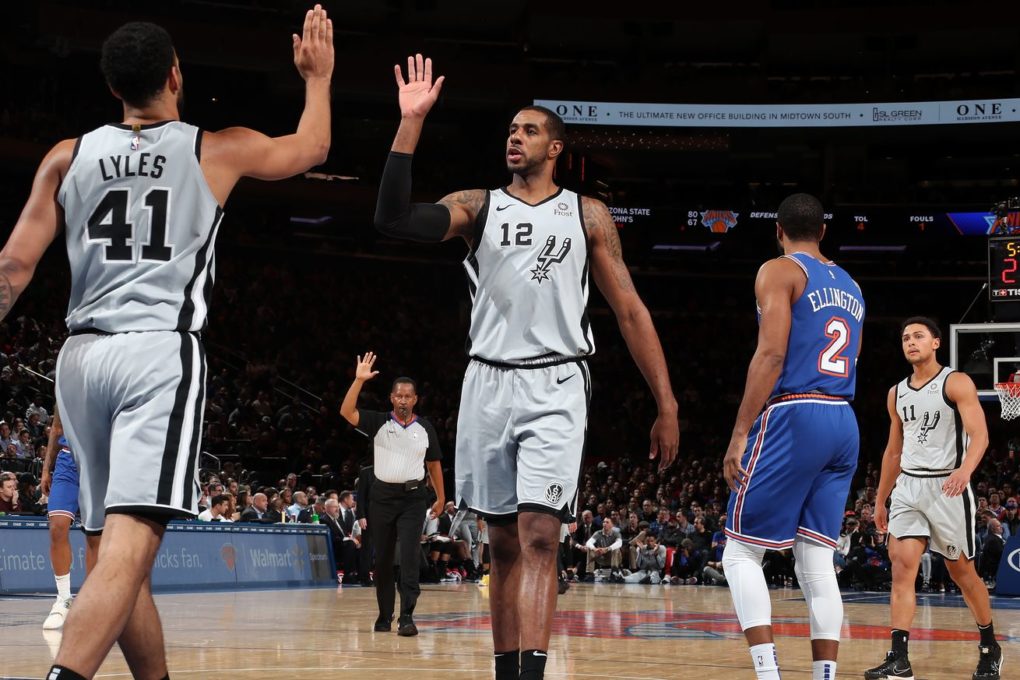
Photo by Nathaniel S. Butler/NBAE via Getty Images
What’s working, what’s not, and how to improve
The Spurs have not always gotten the most bang for their buck out of the gravity of LaMarcus Aldridge’s post ups. Despite the fact that he consistently draws double teams, the Spurs have typically responded with very vanilla schemes to take advantage of the fleeting opportunity to play 4 against 3 on the rest of the court.
On their first play against the Knicks, though, Jakob Poeltl used one of the simplest ways to attack a double team in the post to get an easy layup.
You certainly wouldn’t want to show this defense in a clinic, and the Spurs exploit the mistake perfectly. Julius Randle doubles from the baseline, which can be especially effective against LaMarcus when timed correctly because he’ll often spin right into it as he goes to his turn around jumper. But here, Randle comes with a soft double, with his hands down, with LaMarcus in position to see him coming. The only way it could be worse is if he closed his eyes.
/cdn.vox-cdn.com/uploads/chorus_asset/file/19404615/LMA_pup1.gif)
Marcus Morris is left to zone up the weak side, which Jakob makes difficult by following the double, a great tactic for complicating the defensive scheme because it immediately forces someone to respond and for the entire defense to communicate and adjust. In this case, Morris chooses to split the distance between Jakob cutting along the baseline and DeMar DeRozan at the three point line, which, just a guess here, probably isn’t the right play.
Jakob tried to do the same thing the next time the Knicks sent a double at LaMarcus.
Taj Gibson helps off Jakob as soon as LaMarcus puts the ball on the floor, so Jakob cuts into the paint. Morris meets him there, leaving RJ Barrett to cover both DeMar and Derrick White on the weak side. LaMarcus makes the safe kick out pass to Bryn Forbes high on the right wing and the Spurs swing the ball around to Derrick in the left corner while the Knicks recover. He gets a decent look at a three, but catches back rim.
This is a good example of how a lot of teams tend to deal with double teams in the post. A shooter rotates over the top of the double team to provide an outlet while the player on the opposite wing lifts to provide a passing angle so they can swing it to the corner. It’s simple and rarely results in turnovers, but it also rarely generates anything better than this semi-contested look. Since the Spurs don’t have a whole lot of knock down shooters on the roster, doubling LaMarcus isn’t nearly as painful as it ought to be for the team’s opponents.
Sometimes, though, the Spurs don’t even do that.
Gibson doubles off DeMar, who remains at the arc, which makes it much easier for the Knicks to zone up the weak side. Patty Mills moves over to get the outlet pass as soon as the double comes and then swings it to DeMar, but the Knicks are almost immediately back in good defensive position because there was so little movement around the post up.
Only Randle’s slow walk as he trails behind Marco Belinelli allows the Spurs to find an open look, which Marco drills. Against even a decent defensive team, that shot isn’t there and the Spurs would have wasted an opportunity.
The Knicks played LaMarcus straight up for most of the 2nd and 3rd quarters, a big reason why he scored 17 of his 23 points in those two periods. In the 4th, though, they chose to double off the entry passer.
Derrick feeds LaMarcus then feints a screen for Lonnie Walker IV before cutting hard to the rim. The cut gets him wide open, but LaMarcus’ pass is late and behind him, leading to a turnover. The big fella was late the next time, too, but at least put it on target, which was enough to help seal the game.
This is Milwaukee, a play the Spurs love to run for LaMarcus, which we’ve covered before. Randle takes a terrible angle on the play, opening up to the baseline as LaMarcus uses the back screen from Patty. Wayne Ellington doesn’t even try to impede his progress, meaning Derrick had a good opportunity for the alley oop here.
/cdn.vox-cdn.com/uploads/chorus_asset/file/19404625/LMA_pup_5_1.gif)
He doesn’t take it, though, and the upshot of Randle’s lack of resistance is that LaMarcus gets good position early. Morris doubles off the entry, though the rest of the team doesn’t seem prepared for it.
/cdn.vox-cdn.com/uploads/chorus_asset/file/19404628/LMA_pup_5_2.gif)
Derrick again feints a screen, though who he’d be screening for is a great question as it doesn’t appear Barrett is actually guarding anyone. He’s nominally responsible for DeMar at this point, but he’s mostly just standing there. That leaves Derrick wide open just like the last time, but LaMarcus obviously wants to make sure he doesn’t turn the ball over again, so he jumps and hits Derrick with an over head pass.
That gives Frank Ntilikina enough time to pick him up under the basket, so Derrick takes one dribble as he decides between hitting DeMar or Patty, both of whom are open on the weak side. Barrett fades to the baseline to take away the passing angle to Patty, so Derrick scoops it over to DeMar cutting down the center of the lane for a two-handed jam.
The Spurs were able to exploit most of the Knicks’ double teams thanks to a combination of good movement and bad defense. Against better teams, there’s no guarantee that’ll work. They need more decisive and consistent movement off the double and both more aggressive and more timely passing from LaMarcus to fully realize the value of his post ups.
How the Spurs are handling double teams in the post
How the Spurs are handling double teams in the post

